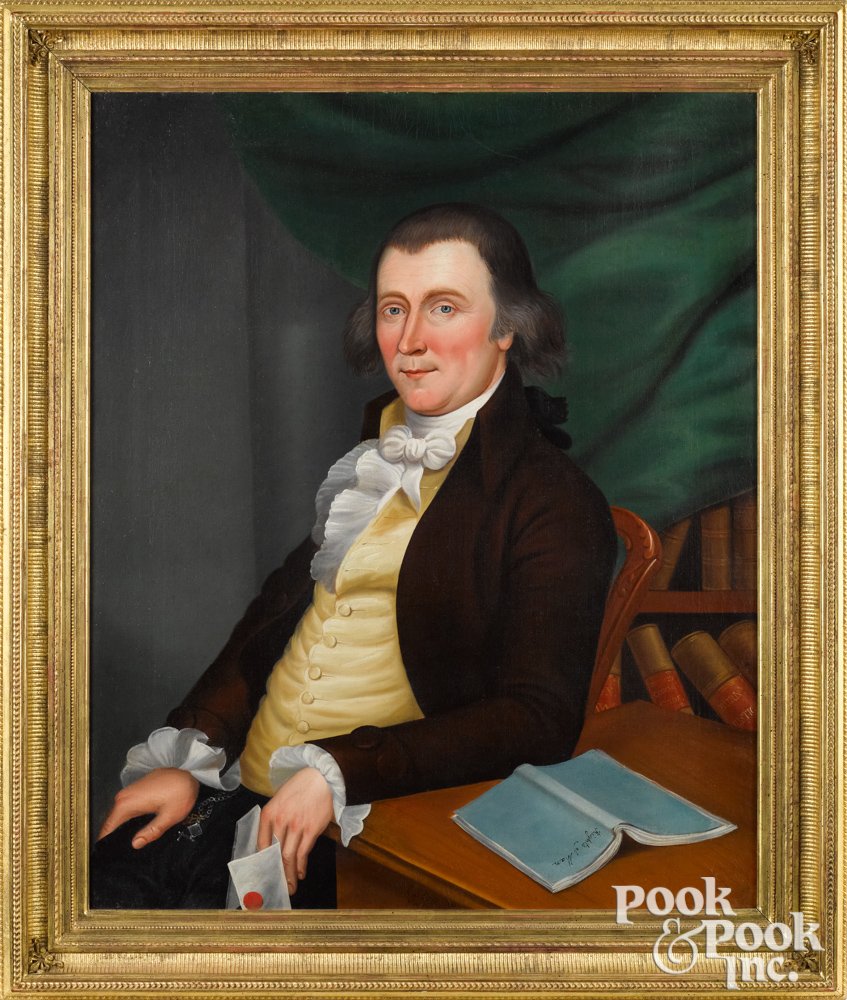Three Men and a Book
David Kerr (1749-1814) was a patriot in the Revolutionary War, commissioned as 1st Lieutenant in Captain George Watts’ company of Militia in Anne Arundel County. Kerr had only been in America for about six years, having emigrated from Scotland in 1769. In 1777 he married Rachel Leeds Bozman and settled in Easton, on Maryland’s Eastern Shore, on an estate called Cook’s Hope Manor. From his early days in Talbot County, Kerr was active in politics. He was a supporter of President George Washington and Vice President John Adams, appearing in the Hamilton Papers as a “Federalist member of the House of Delegates 1790 to 1794… and 1797” (Volume 22, p. 302). In 1789 and 1790 he was also commissioned a Justice of the Peace for Talbot County, and in 1801 associate judge. In 1802 he was appointed a judge of the Orphan’s Court. A prominent citizen, Kerr is painted at ease, seated in front of a green curtain giving a glimpse of his legal library. Among the books are The Justice of the Peace and Parish Officer by Richard Burns, London, 1755, reflecting his status as a Justice of the Peace. Intriguingly, at his elbow is a copy of Thomas Paine’s the Rights of Man. Lying face-down, half-read, it is to be wondered how this highly controversial pamphlet came to be placed so prominently his portrait.
Lot 86, Charles Peale Polk, Portrait of David Brickell Kerr, 1791, 4/21/22 Americana & International Auction, Pook & Pook
Thomas Paine’s The Rights of Man was published in 1791, in London, on March 16th, to immediate furore. the Rights of Man was a response to Edmund Burke’s “Reflections on the Revolution in France,” and was a defense of the early days of the French Revolution. Attempting to bring the political awakening of America to Great Britain, Paine proposed a written constitution and the abolishment of hereditary government. Originally intended to be published on February 22nd, Paine dedicated the book to George Washington. In the uproar, Paine fled to France for his safety, and for good reason. He was tried in London in absentia and convicted of seditious libel against the Crown.
It took about four weeks for the first copies of the Rights of Man to arrive in Philadelphia, where a debate was growing over the role of government. One early copy was obtained by John Beckley, an ardent supporter of Jeffersonian causes, which included a “frugal and simple” central government. Beckley lent his copy, which had to have been an exceedingly hot commodity, to James Madison to quickly view before Beckley published it, but Madison in turn lent it to Thomas Jefferson to hastily read “and return within the day”. Jefferson took longer with it than expected, and Beckley asked that he send it directly to the printer in Philadelphia, care of Jonathan Bayard Smith, with all speed. Jefferson penned a note to Smith to forward with the pamphlet, a few informal lines that were later recast by Smith into the spark that ignited what James Monroe called “the contest of Burke and Paine, as reviv’d in America.”
The Rights of Man was printed in Philadelphia on May 3, 1791, probably by Smith’s friend and political ally Benjamin Franklin Bache. Thomas Jefferson ordered four copies, which he opened only one week after having returned the pamphlet to Smith, and was “thunderstruck” that the publisher had included his private note in his preface. As excerpted, it was damning: “a direct quotation from the Secretary of State expressing extreme pleasure that with the republication of Rights of Man something at last would be said publicly against the “political heresies” that had sprung up in the United States.” (Rights of Man: the Contest of Burke and Paine... in America,” The Papers of Thomas Jefferson, Vol. 20, 1 April- 4 August 1791, ed. Julian P. Boyd, Princeton, 1982.) At the very least, Smith was implying that Jefferson was attacking John Adams, and at the very worst, that Jefferson had sponsored the publication directly. Thus began a very hot summer for Jefferson and Adams. On May 8th, Jefferson wrote a full account of explanation to President Washington, who apparently left him hanging for a response. On June 8th, the first Publicola essay appeared in newspapers, bringing the gossip to the national stage. On June 19th, George Washington wrote his secretary to forward a copy of the pamphlet, that he might read it. On July 21, Thomas Paine himself sent Washington fifty copies of the Rights of Man, to distribute to Jefferson and others. Navigating the waters of political scandal with characteristic restraint, Washington avoided involving himself in the controversy by waiting a full year to thank Paine for the gift. When the Second Congress convened in Philadelphia in October, the emerging party factions continued the contentious debate.
Thomas Paine was a Founding Father. As author of Common Sense, which put the thoughts of the colonies into words, and of The American Crisis, which was read to the troops for inspiration before the crossing of the Delaware, Paine commanded a wide audience in 1791 America. The Rights of Man was distributed by Jeffersonian societies, which championed republican and agrarian ideals. Although the preface was a source of embarrassment for Jefferson, the political fallout of the national debate was massive popular support for the republicans. America’s first political opposition party, the Democratic-Republican, coalesced into being in opposition to the centralizing policies of Hamilton, Adams…and Federalists like David Kerr of Talbot County, Maryland.
Charles Peale Polk (1767-1822) was the orphaned nephew of American portrait painter and Philadelphia museum founder Charles Willson Peale. Polk grew up in the Peale household and, being older than the Peale children, became the first of the next generation of Peale family art students. Beginning his professional career at the age of eighteen, Polk advertised his training with his celebrated uncle. Drawing inspiration from Peale’s portrait work, he borrowed techniques and poses from his uncle, and also painted copies of Peale’s portrait of George Washington. In the late spring of 1791, Polk relocated to Baltimore, where he initially seems to have prospered, carrying out a great number of commissions, and purchasing a fine brick house. This began what Linda Crocker Simmons (Charles Peale Polk: A Limner and His Likenesses, Corcoran Gallery of Art, 1981) calls Polk’s middle period, when, as he worked through his many sittings, his personal style diverged from his uncle’s and gained a directness influenced by more primitive American painters. Polk’s figures and shapes were cleanly outlined and brilliantly colored. Curtained backdrops brought the viewer in closer proximity to the subject. Objects symbolic of the sitter were detailed with precise realism.
An introduction to the elite of Talbot County came via his uncle. Peale had been commissioned to paint Rachel Kerr at her home in Easton, and Polk was brought in to later paint the companion portrait of David Kerr, who had been absent during Peale’s visit. Charles Coleman Sellers wrote, with excerpts from Peale’s own diary, “August 27, 1790, ‘We then go to East Town and leave the picture of Mrs. Barkley at Major Ker’s. Mrs. Ker intends to have her portrait painted, but the Major is from home.’ Early in December, he went to Easton, Maryland ‘and began Mrs. Ker’s picture…’ On Jan. 5, 1791, he wrote to ‘Mrs. Car’ (the Eastern Shore name is so pronounced) asking payment for the picture. Its companion piece of David Kerr is in the style of Charles Peale Polk, who must have been brought in to finish the commission after Peale’s departure and the Major’s return to his home.’ (Portraits and Miniatures by Charles Willson Peale, American Philosophical Society, Philadelphia, 1952.)
In Linda Crocker Simmons’ catalogue of Charles Peale Polk’s works, entry 48, David Brickell Kerr I, is without an image, owner unknown. Its provenance, descending in the family to Mark Brickell Kerr, of Staten Island, New York, until 1948 when it was sold, provides its link to the Chares Willson Peale portrait of Mrs. Kerr, which was also owned by Mark Brickell Kerr, and sold sometime on or after 1952 (now in the collection of the Dallas Museum of Art). “Although this portrait is unsigned, it has been accepted as the work of Polk by Charles Coleman Sellers, Jacob Hall Pleasants, and the staff of the Frick Art Reference Library. It appears to have been commissioned as the companion to a portrait of Mrs. Kerr painted by Charles W. Peale in December, 1790… The portrait of David Kerr was probably painted by Polk shortly after the Peale painting was completed.”(Simmons, p. 39)
After a series of failed business ventures, Polk relocated to Frederick County, Maryland, and in 1798 advertised once more as a painter. Over the next several years, he travelled through Maryland and Virginia painting portraits. His famous “Belle Grove” series for Isaac Hite and James Madison were painted in 1799 and are representative of Polk’s final period of painting, when he expressed a new vigor of form and color. Painted eight years after the Kerr portrait, James Madison, Sr., is shown in his library, which includes the now-symbolic Thomas Paine’s The Rights of Man, indicating his political beliefs. It was this commission that gave Polk his introduction to Thomas Jefferson, and resulted in one of his finest portraits, his 1799 Jefferson. It is thought that contact with Hite, Madison, and Jefferson began Polk’s involvement in politics, supporting the Republicans and Jefferson for President. It certainly gave him a resource to fall back on in 1801 when he wrote to then-Secretary of State James Madison for a government position: “It is known to you, Sir, the languid State of the fine Arts in this Country, particularly that of Painting; and it has been my misfortune to meet but with little encouragement for several Years past, owing to a variety of Causes. In the County where I reside, Tho vastly wealthy, that wealth lies in the hands of a Class of Citizens, whose political principles seem to have forbidden not only the encouragement of those who dared to differ in Opinion from them…”(the James Madison Papers, April 2, 1801). With most of his potential portrait customers on the opposite side of the political divide, his art suffered, and Polk remained a federal employee until at least 1815. In 1822 he departed life not as a painter, but as a bureaucrat.
The artistic reputation of Charles Peale Polk was largely eclipsed by other members of the Peale family. Other than in the diary of Charles Willson Peale and family papers, little information about him has been published. Linda Crocker Simmons, who held the first Polk exhibition in 180 years at the Corcoran, observes, “The strong, primitive, non-academic aspects of Polk’s work, which are most appreciated by the modern eye, were the very qualities that earlier critics sometimes compared unfavorably with the paintings of academy-trained painters. Numbers of his paintings have thus languished in storage or in attics, the facts of his life forgotten,” (Simmons, p.1). This proved an ideal situation for the talent of collector Peter Tillou, who, years later, purchased a dusty old unsigned American folk art portrait in the style of Charles Peale Polk.
Peter Tillou was widely recognized as an authority and arbiter of taste in early American portraiture. The true element of genius in Tillou’s collecting was that, learned as he was, he operated based “purely on personal judgments about the visual merits of each work standing alone,” (Paul Rovetti, Nineteenth-Century Folk Painting: Our Spirited National Heritage, 1973) and, with an eye for the importance and relevance of each item, was able to uncover masterpieces that have been recognized over time. He was in an academic field of one, his principles forming his own canon. In a March 11, 2002 essay for Antiques & Fine Art magazine, he revealed “It was perhaps in the development of my folk art collection that I began to understand what I feel should be at the core of every collection: a response to pure beauty.” Purchased from descendants and dusty attics, many of his acquisitions were undocumented works by unknown artists, and existed outside of academia and traditions. In an interview with Laura Beach, Tillou said, “I developed strong feelings at an early age– which I still hold- that in an ideal environment, no works of art would be signed and each work would be judged solely on its own quality and merit.”(Antiques and the Arts Weekly, August 6, 2019) Over the course of his long career, the folk art discoveries of Peter Tillou substantiated the success of his philosophy and judgement.
The portrait was no exception. Tillou saw quality, and Polk’s individualistic style. He saw beauty, and he held onto the painting. Finally, an expert cleaning by Tom Yost removed the years of grime and revealed confirmation, a signature along the lower edge, on the side of Kerr’s table, “Ch Polk pinx / 1791.”
The mystery of the presence of The Rights of Man remains. Why was it included in the portrait? Was Kerr avidly reading the first British edition, which did not contain the controversial preface? Or was it the May 3rd American edition, still hot off the press? Was Kerr, born in Scotland, signaling his support for reforming British government? The symbol’s interpretation could have had a very different meaning for Kerr in 1791 than it did eight years later for Madison. The Talbot County Maryland Historical Society is the authority on David Kerr, owning his former house and personal items. Historian Mathijs Goyens-Harvey summarizes, “It was clear to see that he (David Kerr) was part of the elite and an avid Federalist, so it does make it interesting that he has Paine’s Rights of Man in the painting that he wanted to be memorialized with. While Paine’s work of the Rights of Man was more of a Democratic-Republican view, Paine was considered more radical as time went on and he wouldn’t always fully agree with any side. So, unless more information about Kerr comes to light, there can really only be educated guesses as to why he might have included that in his painting.” The symbolic book is representative of the kind of detail in artwork collected by Peter Tillou that engrosses the viewer, whether that viewer is a historian, a student of art, or collector of Americana. The painting conjures up echoes of history and of shared experience, it leaves one wondering, and with a sense of having had a brush with greatness.
On April 21st and 22nd, Pook & Pook will present at auction the Estate of Peter Tillou, featuring the portrait of David Kerr and many other items from his private collection of art and furniture. Please contact Pook & Pook for any additional information, and visit our website, at www.pookandpook.com.
By Pook & Pook Inc
Copyright © 1999 - 2026 Pook & Pook Inc. All Rights Reserved.
- Arts Foundation of Cape Cod Assembles Artwork From Top Artists for Its Annual Deck the Walls Auction
- WINTER AUCTION OF JEWELRY & TREASURES COMES TO TURNER AUCTIONS + APPRAISALS ON DECEMBER 13
- Rafael Osona Holiday Auction Features Fine Art, Jewelry & Maritime Works
- Post-Auction Press Release, Americana Auction, October 1,2,3, 2025 at Pook & Pook
- TURNER AUCTIONS + APPRAISALS PRESENTS THE GLADYNE K. MITCHELL COLLECTION ESTATE ON JULY 19
- Celebrate American Heritage with Dana Auctions’ January 25 Antique and Vintage Quilt and Textile Auction
- Exciting Online Auction from Rafael Osona Auctions - Exceptional offerings across multiple categories
- DIAMONDS ARE FOREVER: FINE JEWELRY, DIAMONDS & MORE COME TO TURNER AUCTIONS + APPRAISALS
- TAKE TIME OUT TO VIEW SPORTS MEMORABILIA, COMING TO TURNER AUCTIONS + APPRAISALS ON AUGUST 17
- Rafael Osona Announces Two Day Auction, Aug 3 & 4, 2024 Americana, Fine Arts, Historic Nantucket, Décor ~ Saturday, August 3 The Marine Session ~ Sunday, August 4 Open for Bidding ~ 1000 Lots ~
-
Antique Toy Auction at Pook & Pook Inc, with Noel Barrett
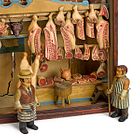
-
Sporting Immortality

-
The Collection of Mrs. John Gutfreund – Murray House, Villanova, Pennsylvania
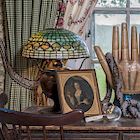
-
Leonora Carrington Oil Painting Sells for More Than Twice the Asking Price in the Latin American Art Auction Hosted by Morton Subastas in Mexico City
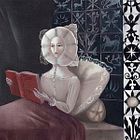
-
Peter Tillou Collection Highlights Litchfield Auctions’ 25th Anniversary
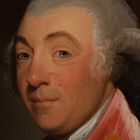



 EUR
EUR CAD
CAD AUD
AUD GBP
GBP MXN
MXN HKD
HKD CNY
CNY MYR
MYR SEK
SEK SGD
SGD CHF
CHF THB
THB
